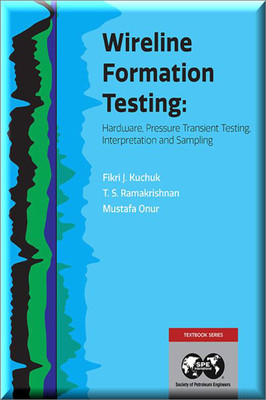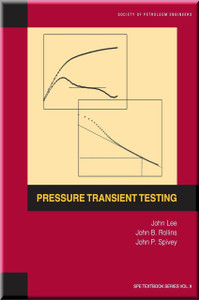Description
Delivering a comprehensive exploration of modeling through hardware, advanced formation testing, and new interpretation techniques, Wireline Formation Testing will appeal to engineers looking for a deeper understanding of the potential insights and limitations of these important computations and analytics. Since improving reservoir characterization is paramount to computing reliable predictors and uncertainties in reservoir performance, the advanced techniques presented here will help with meeting that goal. Wireline Formation Testing is the must-have resource for engineers who wish to evaluate reservoirs simultaneously with the scope of the testing results, as well as for engineering students seeking understanding of this primary source of wireline formation pressure data collection.
Features & Benefits
- Delivers advanced modeling and interpretation techniques to improve formation evaluation accuracy
- Breaks down wireline testing hardware and workflows for practical application in the field
- Enhances reservoir characterization by refining pressure, mobility, and fluid analysis
- Emphasizes uncertainty quantification to support more reliable performance forecasting
- Bridges theory with real-world case studies for both academic and professional relevance
Audience
- Reservoir engineers aiming to improve formation evaluation techniques
- Petrophysicists and formation evaluation specialists working with wireline data
- Exploration & production professionals involved in reservoir analysis and planning
- R&D teams developing or refining wireline testing tools and interpretation methods
- Graduate students in petroleum engineering seeking a deeper understanding of formation testing
About the Author
Fikri J. Kuchuk, emeritus geoscientist fellow, retired from Schlumberger after 35 years as fellow and chief reservoir engineer in the USA, France, and the Middle East. He holds 45 years of experience in reservoir char-acterization and engineering, particularly in pressure transient formation and well testing. From 1988 to 1994, Kuchuk was a consulting professor in the petroleum engineering department of Stanford University, where he taught Advanced Well Testing. Kuchuk is a distinguished and honorary member of the Society of Petroleum Engineers, from which he has received the following: 1994 Reservoir Engineering Award, 2000 Formation Evaluation Award, and 2001 Regional Service Award. In 2010, he received an honorary membership to SPE. Kuchuk is also a member of the Society for Industrial and Applied Mathematics, the Russian Academy of Natural Sciences, and the American National Academy of Engineering. He is a two-time recipient of the Henri G. Doll award.
T. S. Ramakrishnan is a senior science adviser in Schlumberger-Doll Research. He holds a BTech from IIT Delhi, and a PhD from IIT Chicago, both in chemical engineering. In addition to developing some of the theories behind high pH flooding, he has published in the areas of injection and formation testing, array induction logging, and downhole relative permeability, among others. He is a distinguished member of SPE (2003) and was the recipient of the SPE Formation Evaluation award (2009). He is also a distinguished alumnus of IIT Delhi and received the Charles W. Pierce distinguished alumni award from IIT Chicago. His undergraduate thesis received the national P. C. Ray award. He holds 67 awarded U.S. patents.
Mustafa Onur is McMann chair professor of the McDougall School of Petroleum Engineering and director of Tulsa University Petroleum Reservoir Exploitation Projects (TUPREP) at the University of Tulsa. His current research is on the application of inverse problem theory, mathematical optimization, and data science to problems of relevance in optimal reservoir management and development, assisted history matching and uncertainty quantification for oil, gas, and geothermal reservoirs. Onur is the recipient of the 2010 International SPE Formation Evaluation Award and the 2018 International Reservoir Description and Dynamics Award and has been an SPE Distinguished Member since 2014.
Details
Type: Softcover
Size: 8.5x11
Pages: 402
Published: 2021
ISBN: 9781613998434






